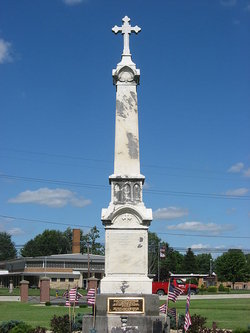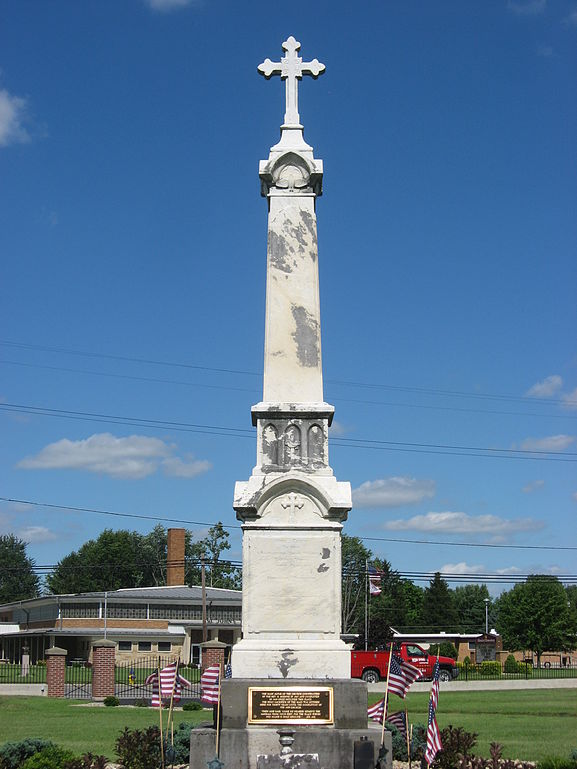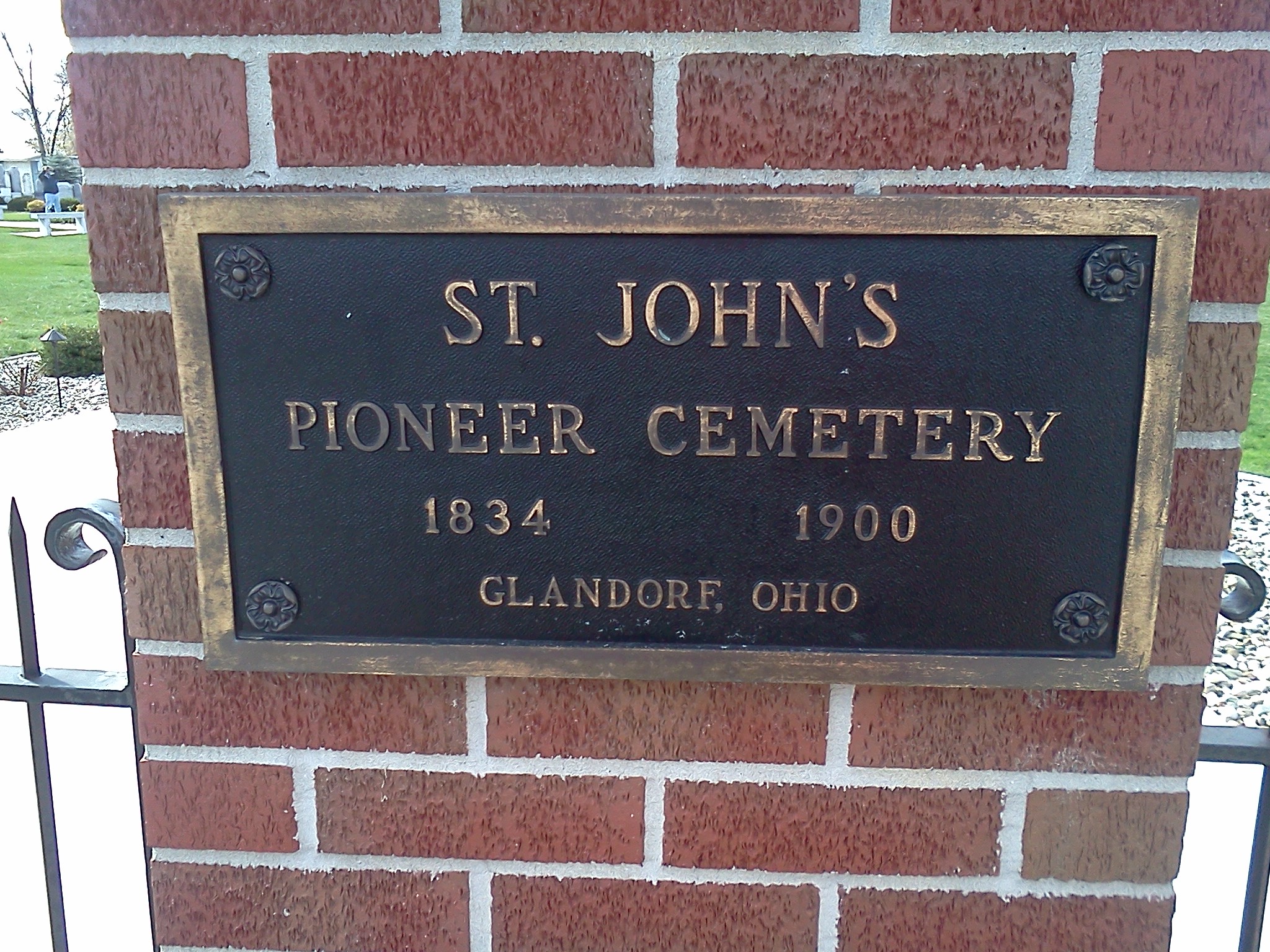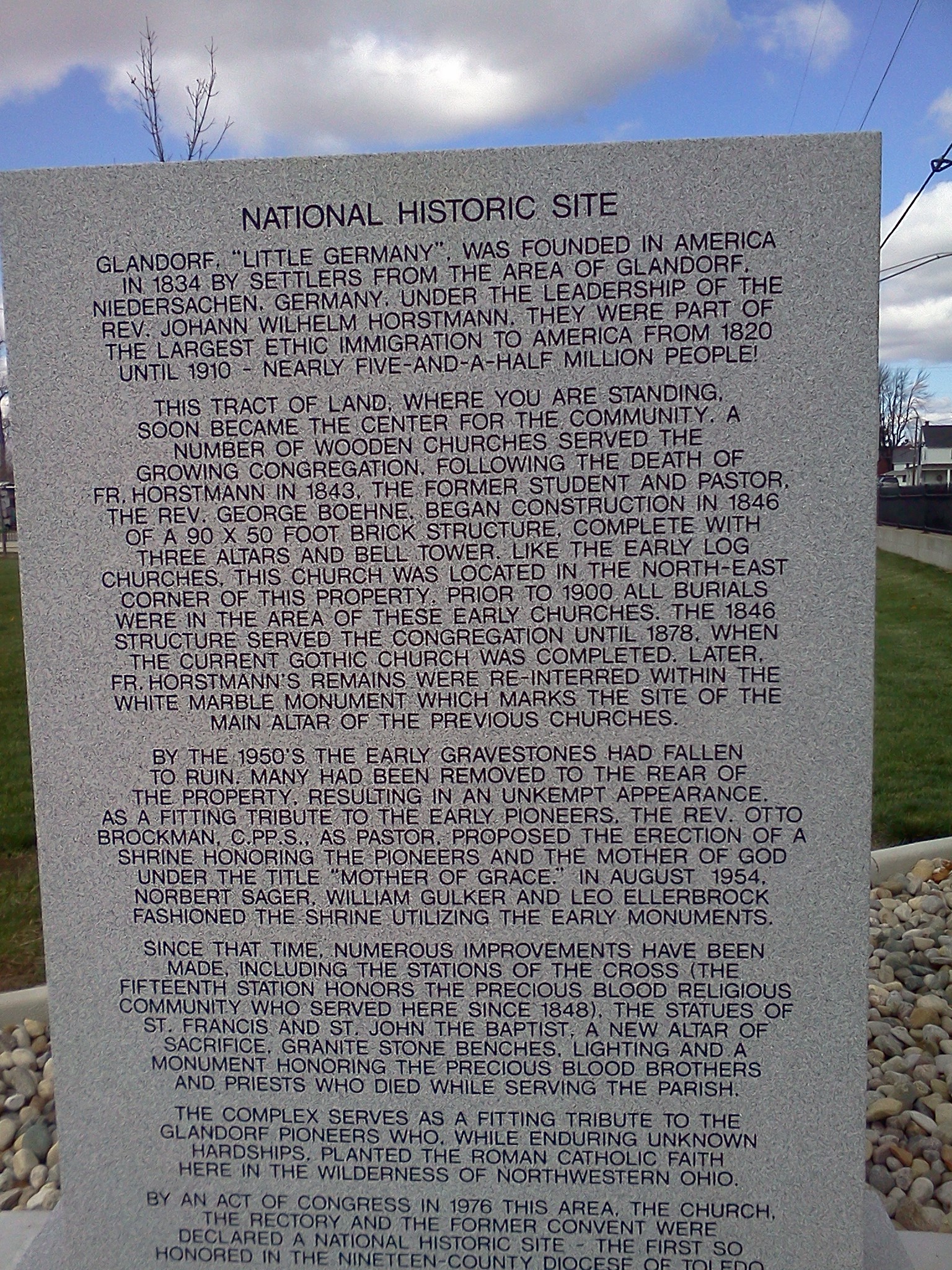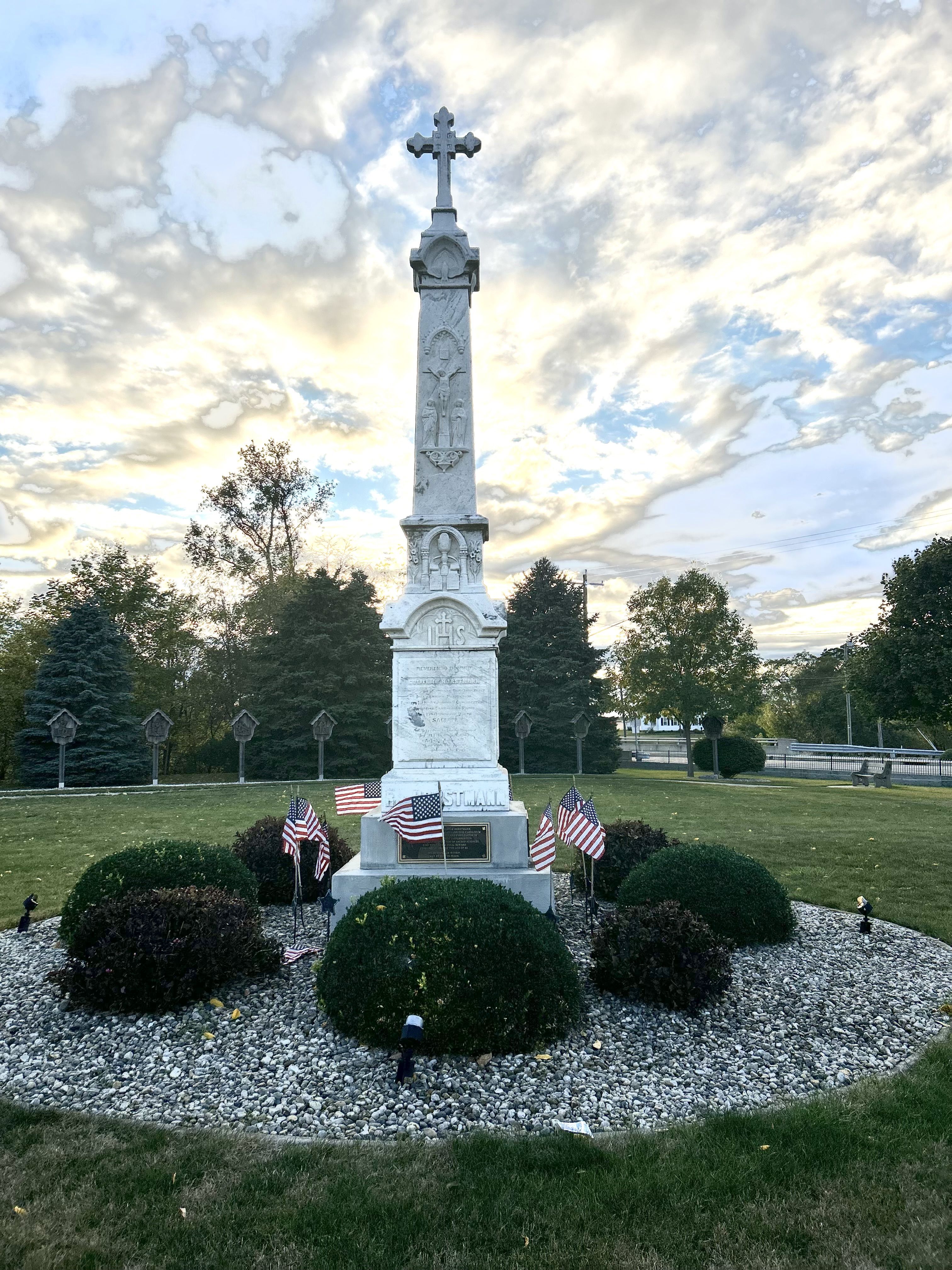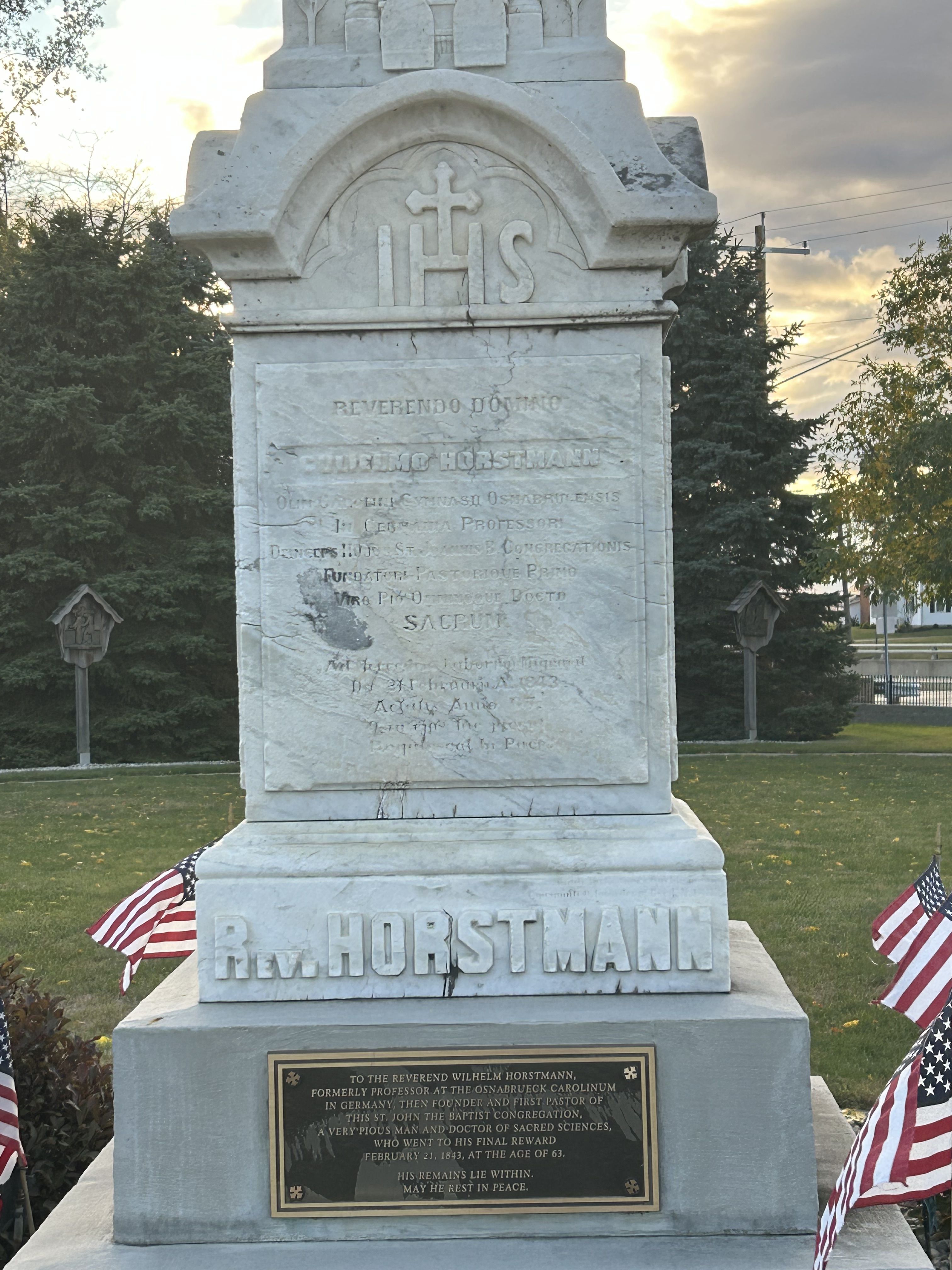Father Horstmann gained a well-rounded education in theology, mathematics, philosophy, physics and botany. He was given a chair as professor at the Gymnasium Carolinum in Osnabruck. He held this position until resigning in 1832, with the intention of founding a colony in America.
Father Horstmann and six other German settlers embarked on the ship Columbus on September 7, 1833 in Amsterdam, landed November 6, 1833 in New York, and purchased some land in Putnam County in December. Members of this group of immigrants were Johann F. Kahle, Wilhelm Gülker, Christian Strope, F. Wischmann, Friedrich Bredeick and Mathias and Friedrich Bockrath.
Horstmann's land was named Glandorf. Kahle bought land at Greensburg Township approximately 5 miles to the west of Glandorf and named it Maria Camp. Their wives and ten other families from Glandorf Germany followed in 1834. This was just the beginning of further emigration from Germany to Ohio and other states of the USA.
Once here, Horstmann brought the community/parish together by providing secular and religious services to the people of Glandorf.
In 1834 Horstmann built a 16' x 18' log house to serve as church, school, and rectory. The new parish was placed under the patronage of St. John the Baptist.
In the years 1834, 1835 and 1836 more settlers arrived. These included families with the names of Kolhoff, Hermann, Schroeder, Duling, Mueller, Utendorf, Unverferth, Gerding, Shierloh, Meyer, Feldman, Drerup, Lehmkuhle, Hoffman, Moening, Uphaus, Recker, Verhoff, Ellerbrock, Erhart and others.
With all these new arrivals it became necessary to build a separate church, a wooden framed structure 22' X 40' on the north side of the cemetery in 1835. The wooden church had a steeple, a bell and a pulpit from a hallowed-out sycamore log.
After his death on February 21, 1843, Horstmann left his land to the community.
A larger brick church for the congregation followed between 1846 and 1848.
Years later, the Neo-Gothic St. John's the Baptist Church was built and dedicated on December 15, 1878. This structure still stands in Glandorf today, and was the largest Roman Catholic Church in all of Ohio at that time. Several awesome structures don the inside of the church, including figurines from Austria, stained glass windows imported from Munich, Germany, and a highly detailed pulpit which was purchased at the Centennial Exposition in Philadelphia.
Across the street from the church is the Pioneer cemetery, which holds the grave of Fr. Horstmann and many other pioneers of Glandorf who died between 1834 and 1900.
Father Horstmann gained a well-rounded education in theology, mathematics, philosophy, physics and botany. He was given a chair as professor at the Gymnasium Carolinum in Osnabruck. He held this position until resigning in 1832, with the intention of founding a colony in America.
Father Horstmann and six other German settlers embarked on the ship Columbus on September 7, 1833 in Amsterdam, landed November 6, 1833 in New York, and purchased some land in Putnam County in December. Members of this group of immigrants were Johann F. Kahle, Wilhelm Gülker, Christian Strope, F. Wischmann, Friedrich Bredeick and Mathias and Friedrich Bockrath.
Horstmann's land was named Glandorf. Kahle bought land at Greensburg Township approximately 5 miles to the west of Glandorf and named it Maria Camp. Their wives and ten other families from Glandorf Germany followed in 1834. This was just the beginning of further emigration from Germany to Ohio and other states of the USA.
Once here, Horstmann brought the community/parish together by providing secular and religious services to the people of Glandorf.
In 1834 Horstmann built a 16' x 18' log house to serve as church, school, and rectory. The new parish was placed under the patronage of St. John the Baptist.
In the years 1834, 1835 and 1836 more settlers arrived. These included families with the names of Kolhoff, Hermann, Schroeder, Duling, Mueller, Utendorf, Unverferth, Gerding, Shierloh, Meyer, Feldman, Drerup, Lehmkuhle, Hoffman, Moening, Uphaus, Recker, Verhoff, Ellerbrock, Erhart and others.
With all these new arrivals it became necessary to build a separate church, a wooden framed structure 22' X 40' on the north side of the cemetery in 1835. The wooden church had a steeple, a bell and a pulpit from a hallowed-out sycamore log.
After his death on February 21, 1843, Horstmann left his land to the community.
A larger brick church for the congregation followed between 1846 and 1848.
Years later, the Neo-Gothic St. John's the Baptist Church was built and dedicated on December 15, 1878. This structure still stands in Glandorf today, and was the largest Roman Catholic Church in all of Ohio at that time. Several awesome structures don the inside of the church, including figurines from Austria, stained glass windows imported from Munich, Germany, and a highly detailed pulpit which was purchased at the Centennial Exposition in Philadelphia.
Across the street from the church is the Pioneer cemetery, which holds the grave of Fr. Horstmann and many other pioneers of Glandorf who died between 1834 and 1900.
Advertisement
Explore more
Sponsored by Ancestry
Advertisement
